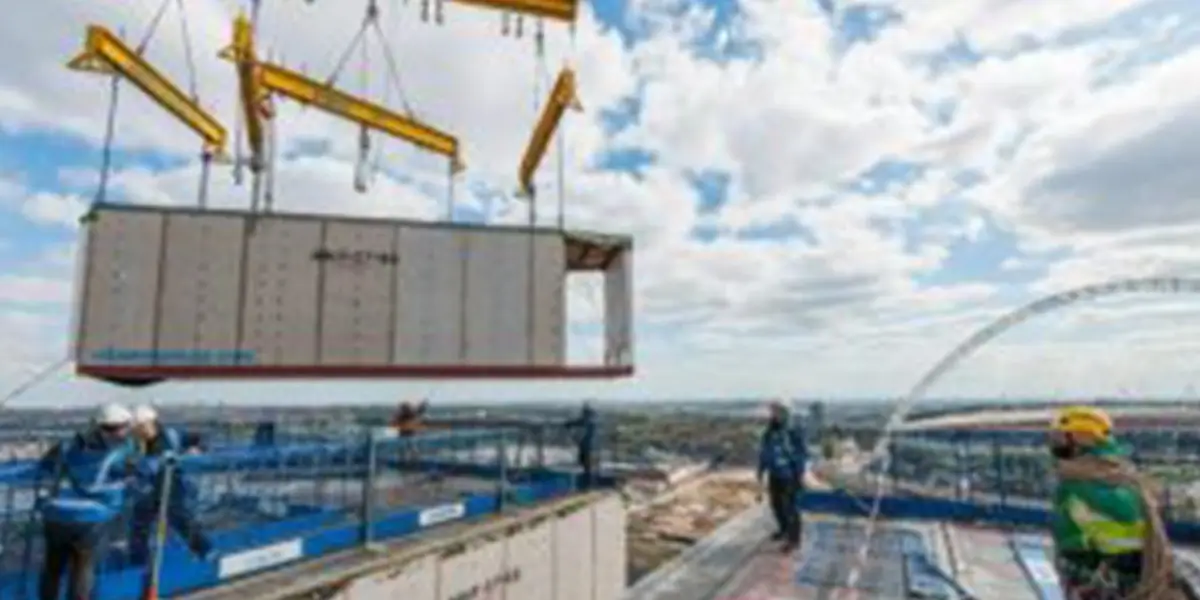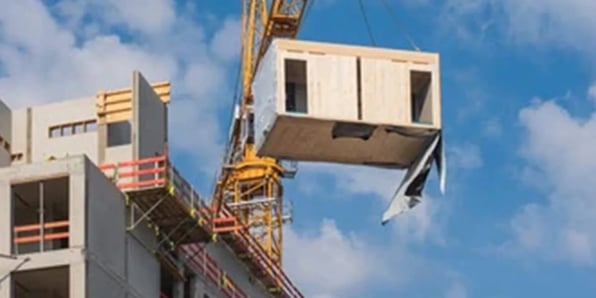
Meeting Need with Speed: Modular Construction as a key innovator
27,348 people live on every square kilometre of land in the Mumbai Conurbation, and this figure is expected to grow to 101,066 by 2020 making it the most densely populated area on the planet. This striking statistic is characteristic of the burgeoning and rapidly urbanised population trends which are currently driving the subcontinent’s economic miracle, but those same trends are bringing their own problems as well: a need to create ever greater numbers of residential and commercial units, quicker than ever before and within the severe constraints imposed by already over populated areas such as Mumbai.
But India is rising admirably to the challenge and Modular Construction is a vital ingredient in its urban planning strategies: prefabricating key components offsite and assembling units within the final urban matrix. The process offers significant advantages over conventional building techniques, with clear advantages both in terms of efficiency and final project costing. Rehabilitation models (re-acquiring units after use) are also faster and more efficient with Modular Construction and it has a much-reduced environmental impact too.
Modular Construction is far from being a recent innovation on the subcontinent: the first prefabricated units were erected in India as long ago as 1905 (with a futuristic turn of phrase they were called “ultra-light constructions”) and in those early years stone and logs were the preferred materials, unlike today’s lightweight steel components. Prefabrication techniques took off later with the foundation of the Hindustan Housing Factory in 1953, designed to meet severe housing shortages arising from the influx of refugees from West Pakistan (now Bangladesh). The Indian Government ran the company then (and still does, as Hindustan Prefab Ltd) manufacturing precast concrete components for later assembly on site in a variety of commercial and residential projects. Tata Steel is also heavily involved in the segment at the moment with its “nest system” of prefabrication, as is Modulex Modular Buildings, which operates the World’s largest (and India’s first) steel modular building facility.
The main advantage of modular construction is of course its speed of delivery, with a unique capacity to meet the tightest deadlines imposed by current trends in Indian real estate markets, whilst at the same time adapting to the subcontinent’s relative shortages in on site skilled labour and other key resources such as water. But its other great advantage over traditional construction methods is durability, adopting strict checking mechanisms at the fabrication stage, which enable units to be customised more effectively to the most demanding specifications. The whole process also requires less labour, so it’s cheaper too.
BIM (Building Information Modelling) is now being used in India to pre-plan and visualise the entire process from drawing board to final assembly, making modular construction a much leaner and more efficient process through maximising pre-loaded work off site; and that’s important on the subcontinent in particular where key resources are increasingly scarce.
Yet another reason why Modular Construction is at the forefront of the clutch of key initiatives currently addressing India’s unprecedented surge in demand for residential and commercial real estate.
Red Ribbon played a key role in setting up Modulex Modular Buildings, recognising the company’s outstanding potential to deliver above market rate returns for investors through its ability to tap into unusually high demand levels in Indian real estate markets. The company provides an exciting opportunity for investors to take advantage of this key trend in the fastest growing large economy on the planet.[nectar_btn size="large" open_new_tab="true" button_style="regular" button_color_2="Accent-Color" icon_family="none" url="http://bit.ly/ModulexModularBuilings" text="Modulex Modular Buildings Plc"]
Red Ribbon CEO, Suchit Punnose said:
We are proud of Red Ribbon most ambitious project and India’s first Steel Modular Building Factory, Modulex Modular Buildings Plc: working from a model which enables prefabrication of high quality units to the most stringent specifications and subject to the rigorous demands of western regulation, it offers significant advantages compared to conventional buildings such as cost effectiveness, flexibility and shorter time production. Modular construction can deliver innovative designs while providing a key solution for the sector.
We believe the company is now exceptionally well placed to rise to the challenges being created through the unprecedented demand within India’s real estate sector, both domestic and commercial. And we are confident too that we will be able to deliver above market rate returns for our investors in doing so, through making the most of the opportunities that these challenges will inevitably create.
[social_buttons full_width_icons="true" facebook="true" twitter="true" google_plus="true" linkedin="true" pinterest="true"]

%20(1).jpg?width=596&name=airport-terminal%20(1)%20(1).jpg)

-Oct-11-2023-11-53-18-4937-AM.png?width=596&name=Untitled%20design%20(3)-Oct-11-2023-11-53-18-4937-AM.png)